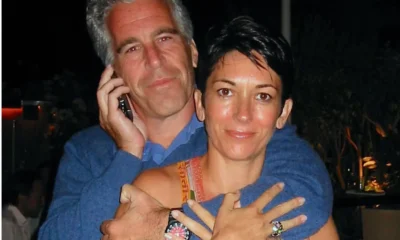Related: Celebrities Who Used Surrogates to Welcome Children
Advertisement
Courtesy of Amrit Kapai
Family Karma’s Amrit Kapai and his husband, Nicolas Kouchoukos, have officially begun their surrogacy journey.
“We’re ecstatic. I think we’re just at a point, both of us, where we just want to keep adding layers to our relationship, our marriage, and we want to create a family,” Kapai exclusively shares in the newest issue of Us Weekly. “I feel like we’ve done it all. So much of it’s so fleeting, but I think having a kid is just this magical — exhausting — but magical journey. And we’re both very ready to embark on that journey. We’re hoping. Hoping, hoping for at the very least a pregnancy in 2024.”
According to Kapai, he and Kouchoukos, who wed in April 2022, decided to pursue surrogacy in Colombia after a friend of his had “really good things to say about the process down there.”
“There were a couple of things that really stood out for us in terms of doing it abroad. One, it was … a little cost prohibitive to do it here. It’s just so expensive,” he explains. “But even putting that aside, there were certain parts of the process that we really loved hearing about in Colombia, one of which was, for instance, in Colombia, they’ll do as many tries as it takes to get a baby in your arms.”
Not to mention, the country is not too far of a journey from the couple’s home in Miami. “The proximity of Miami to Bogotá is, I think, closer than Miami to Chicago,” Kapai adds.
Kapai and Kouchoukos took their first trip to Colombia in September 2023, during which they met with representatives from the surrogacy clinic, foundation and agency who will be helping throughout their parenthood process. “It was not only our introduction to Colombia and our first time there, but it was our introduction to the process and an introduction to the various people that are going to have a part in bringing our child into this world,” Kapai tells Us.
Courtesy of Amrit Kapai
As an LGBTQ+ couple, Kapai and Kouchoukos also met with a legal team to ask important questions about the country’s laws regarding surrogacy and the queer community.
“What happens if Columbia decides in six months that they want to repeal some of their laws when it comes to surrogacy or when it comes to their LGBTQ+ laws?” asked Kapai. “Because right now today, Columbia is a very, very, very pro LGBTQ+ country… But what happens if that changes?
“That’s such a legitimate concern for us because not only do we have to worry about, well, medically how this is going to take place, but legally the last thing we want to do is go through this entire process and then be told you can’t have your kid back in the country for whatever reason,” Kapai states.
During their trip, the Bravo stars also got to meet directly with potential surrogates, though they have not selected their surrogate yet. “We have selected our egg donor, which is really exciting,” Kapai reveals.
As far as surrogacy specifics, Kapai says he and his husband plan to do an “egg split,” adding, “We’ll split the eggs and fertilize half with Nicholas’s sperm, half with my sperm. So then that way the children – because we want more than one — the children will have the same biological mother, different biological dads, either my sperm or Nicholas’ sperm.”
Courtesy of Amrit Kapai
Though the couple hopes to have more kids in the future, Kapai is hoping their first will be a baby girl.
“I want to be a girl dad and buy pretty dresses for her and learn how to do her hair and all of that really fun stuff,” he tells Us. “But at the same time, there’s so many apprehensions. Well, what if I can’t be that motherly figure that she needs? I don’t know. But I mean, those are again, things that I’m just worrying about now that I don’t need to worry about at this time.”
And Kouchoukos is just as excited for parenthood, added Kapai: “I think he’s more of the, I just want a baby, whether it’s a boy or girl.”
For more on Kapai and Kouchoukos, watch the video above and pick up the latest issue of Us Weekly, on newsstands now.
With reporting by Andrea Simpson
Courtesy of Amrit Kapai Family Karma’s Amrit Kapai and his husband, Nicolas Kouchoukos, have officially begun their surrogacy journey. “We’re ecstatic. I think we’re just at a point, both of us, where we just want to keep adding layers to our relationship, our marriage, and we want to create a family,” Kapai exclusively shares in
Us Weekly Read More

50 Cent’s new Netflix docuseries about Sean “Diddy” Combs is more than a headline-grabbing exposé; it is a meticulous breakdown of how power, celebrity, and silence can collide in the entertainment industry.
Across its episodes, the series traces Diddy’s rise, the allegations that followed him for years, and the shocking footage and testimonies now forcing a wider cultural reckoning.

The docuseries follows Combs from hitmaker and business icon to a figure facing serious criminal conviction and public disgrace, mapping out decades of influence, branding, and behind-the-scenes behavior. Watching that arc shows how money, fame, and industry relationships can shield someone from scrutiny and delay accountability, even as disturbing accusations accumulate.

Exclusive footage of Diddy in private settings and in the tense days around his legal troubles reveals how carefully celebrity narratives are shaped, even in crisis.
Viewers can learn to question polished statements and recognize that what looks spontaneous in public is often the result of strategy, damage control, and legal calculation.
Interviews with alleged victims, former staff, and industry insiders describe patterns of control, fear, and emotional or physical harm that were long whispered about but rarely aired in this detail. Their stories underline how difficult it is to speak out against a powerful figure, teaching viewers why many survivors delay disclosure and why consistent patterns across multiple accounts matter.
As executive producer, 50 Cent uses his reputation and platform to push a project that leans into uncomfortable truths rather than protecting industry relationships. The series demonstrates how documentary storytelling can challenge established power structures, elevate marginalized voices, and pressure institutions to respond when traditional systems have failed.
Reactions to the doc—ranging from people calling it necessary and brave to others dismissing it as a vendetta or smear campaign—expose how emotionally invested audiences can be in defending or condemning a famous figure. Watching that debate unfold helps viewers see how fandom, nostalgia, and bias influence who is believed, and why conversations about “cancel culture” often mask deeper questions about justice and who is considered too powerful to fall.

A new Christmas-themed episode of South Park is scheduled to air with a central plot in which Satan is depicted as preparing for the birth of an Antichrist figure. The premise extends a season-long narrative arc that has involved Satan, Donald Trump, and apocalyptic rhetoric, positioning this holiday episode as a culmination of those storylines rather than a stand‑alone concept.
According to published synopses and entertainment coverage, the episode frames the Antichrist as part of a fictional storyline that blends religious symbolism with commentary on politics, media, and cultural fear. This follows earlier Season 28 episodes that introduced ideas about Trump fathering an Antichrist child and tech billionaire Peter Thiel obsessing over prophecy and end‑times narratives. The Christmas setting is presented as a contrast to the darker themes, reflecting the series’ pattern of pairing holiday imagery with controversial subject matter.
Coverage notes that some figures connected to Donald Trump’s political orbit have criticized the season’s portrayal of Trump and his allies, describing the show as relying on shock tactics rather than substantive critique. Commentators highlight that these objections are directed more at the depiction of real political figures and the show’s tone than at the specific theology of the Antichrist storyline.
At the time of reporting, there have not been widely reported, detailed statements from major religious leaders focused solely on this Christmas episode, though religion-focused criticism of South Park in general has a long history.
Entertainment outlets such as The Hollywood Reporter, Entertainment Weekly, Forbes, Slate, and USA Today describe the Antichrist arc as part of South Park’s ongoing use of Trump-era and tech-world politics as material for satire.
South Park is rated TV‑MA and is intended for adult audiences due to strong language, explicit themes, and frequent use of religious and political satire. Viewers who are sensitive to depictions of Satan, the Antichrist, or parodies involving real political figures may find this episode particularly objectionable, while others may view it as consistent with the show’s long‑running approach to controversial topics. As with previous episodes, individual responses are likely to vary widely, and the episode is best understood as part of an ongoing satirical series rather than a factual or theological statement.

Sydney Sweeney has decided she is finished watching strangers on the internet treat her face like a forensic project. After years of side‑by‑side screenshots, “then vs now” TikToks, and long comment threads wondering what work she has supposedly had done, the actor is now addressing the plastic surgery rumors directly—and using them to say something larger about how women are looked at in Hollywood and online.

Sweeney points out that people are often mistaking normal changes for procedures: she grew up on camera, her roles now come with big‑budget glam teams, and her body has shifted as she has trained, aged, and worked nonstop. Yet every new red‑carpet photo gets folded into a narrative that assumes surgeons, not time, are responsible. Rather than walking through a checklist of what is “real,” she emphasizes how bizarre it is that internet detectives comb through pores, noses, and jawlines as if they are owed an explanation for every contour of a woman’s face.
By speaking up, Sweeney is redirecting the conversation away from her features and toward the culture that obsesses over them.
She argues that the real issue isn’t whether an actress has had work done, but why audiences feel so entitled to dissect her body as public property in the first place.
For her, the constant speculation is less about curiosity and more about control—another way to tell women what they should look like and punish them when they do not fit. In calling out that dynamic, Sweeney isn’t just defending herself; she is forcing fans and followers to ask why tearing apart someone else’s appearance has become such a popular form of entertainment.


Wicked Sequel Disappoints Fans: Audience Verdict on For Good
Yolanda Adams Questions Traditional Views on God’s Gender, Audience Reacts


Ariana & Cynthia Say They’re in a ‘Non‑Demi Curious, Semi‑Binary’ Relationship… WTF Does That Even Mean?


Epstein Files to Be Declassified After Trump Order


Trump Throws Epstein Files at Clinton’s Door


Ariana Grande’s Red Carpet: When Fans Forget Boundaries


Kim Kardashian Reportedly Scammed by Psychic Before Failing Bar Exam


Hollywood’s Kiss or Miss Policy: Why Saying No Got Neal McDonough Blackballed